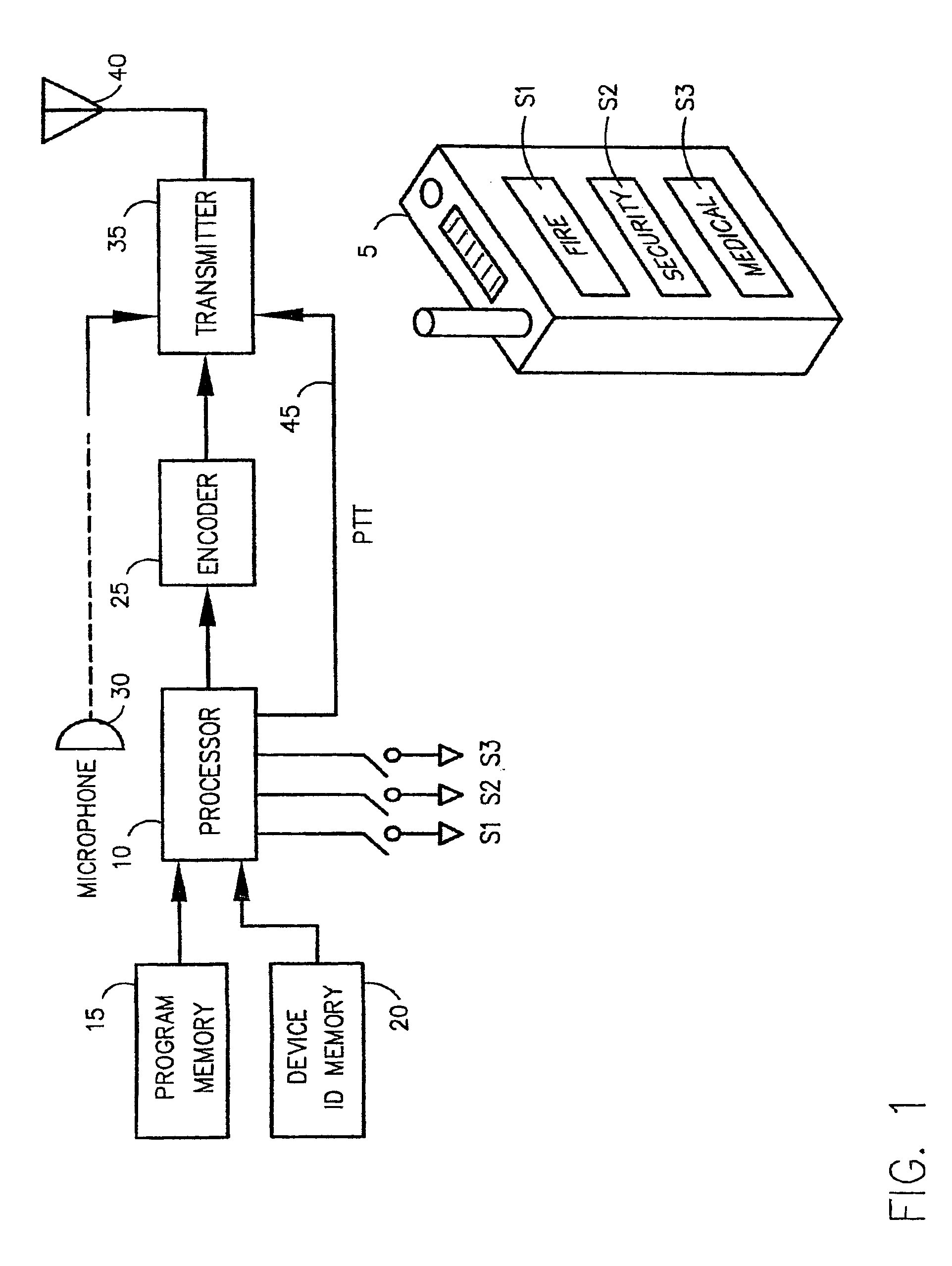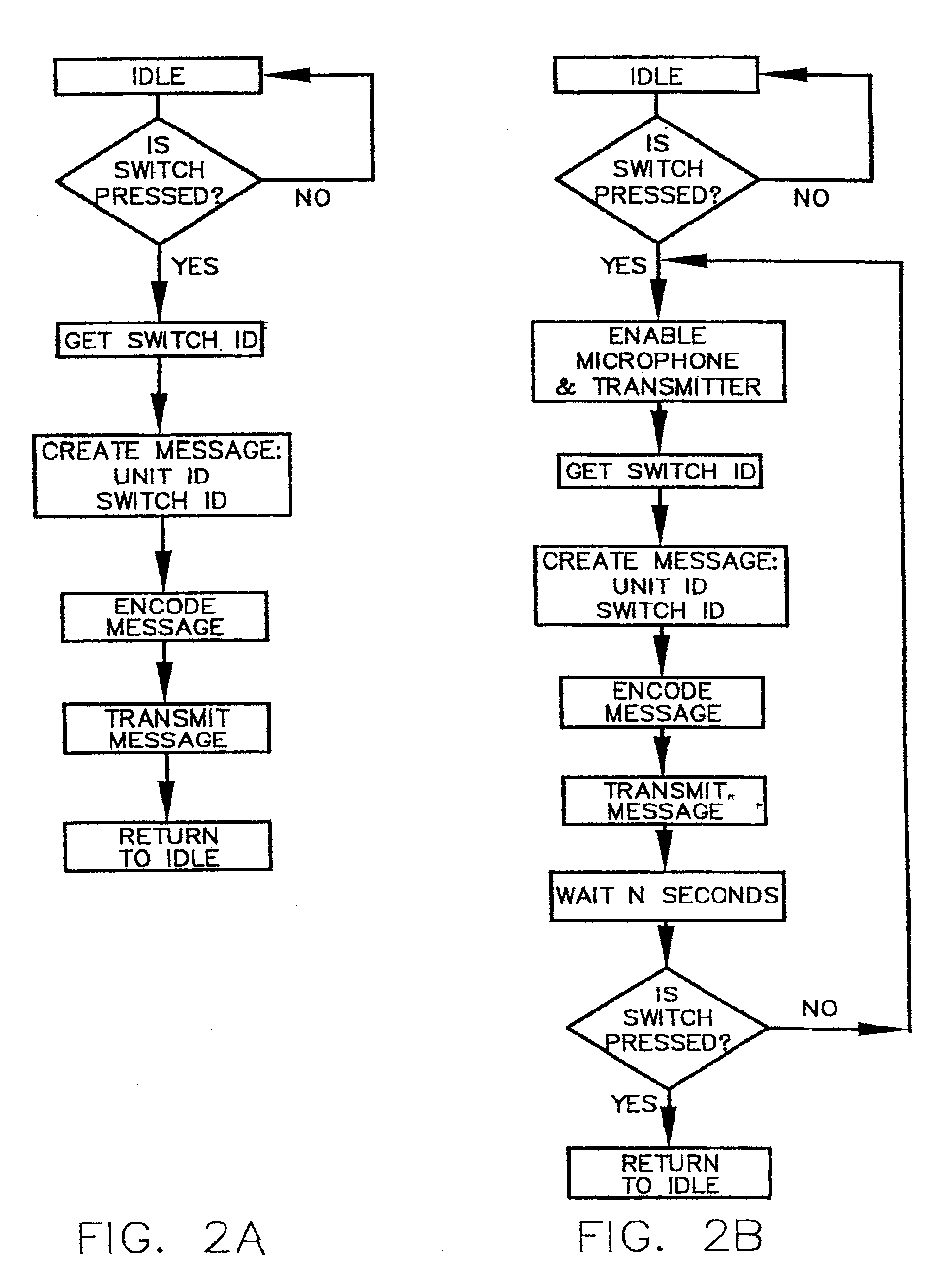Networked personal security system
a personal security and network technology, applied in the field of personal security alarms or panic button devices, can solve the problems of inability to manually activate the panic button, inability to track the location of the patient, and the requirement that the panic button be manually activated, so as to preserve the ability to transmit and minimize the current dependency of finding.
- Summary
- Abstract
- Description
- Claims
- Application Information
AI Technical Summary
Benefits of technology
Problems solved by technology
Method used
Image
Examples
Embodiment Construction
FIGS. 1-3 depict a basic embodiment of the system that does not include encoded location information. This application is particularly well suited for confined environments such as aircraft and the like, where the location of the person sending the signal is not as critical as in large installations such as a high school campus. In its simplest form, the alarm unit 5 of FIG. 1 comprises a simple panic button, which is a radiator that transmits a coded signal to the closest receiver via the antenna 40, with the receivers of FIG. 3 being conveniently located and connected to the network. Receivers can be integrated into other devices, such as wall clock appliances, thermostats, smoke detectors, motion detectors, and the like in the room or facility where the alarm unit is to be used. The transmitter radiator may comprise any of a number of signal generating protocols, such as, by way of example: RF (a potential location problem for certain applications in that it goes through walls so...
PUM
 Login to View More
Login to View More Abstract
Description
Claims
Application Information
 Login to View More
Login to View More - R&D
- Intellectual Property
- Life Sciences
- Materials
- Tech Scout
- Unparalleled Data Quality
- Higher Quality Content
- 60% Fewer Hallucinations
Browse by: Latest US Patents, China's latest patents, Technical Efficacy Thesaurus, Application Domain, Technology Topic, Popular Technical Reports.
© 2025 PatSnap. All rights reserved.Legal|Privacy policy|Modern Slavery Act Transparency Statement|Sitemap|About US| Contact US: help@patsnap.com



